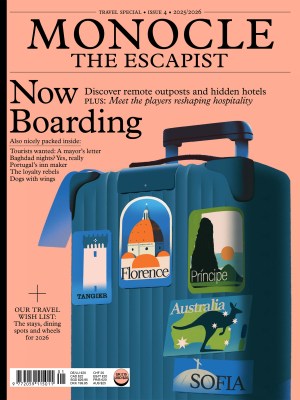Meraki Studios, an intimate boutique hotel tucked in the mountains of central Crete
A cluster of holiday apartments among striking, semi-mountainous terrain pays homage to the island’s landscape beyond the beaches.
The beach or the mountains? That’s the outdoor enthusiast’s perennial holiday dilemma. This summer, however, a new development in one of Europe’s best-loved seaside destinations offers a surprising answer. A few years ago, a German-Austrian couple planning to relocate their family to Crete approached Sigurd Larsen, a Danish-born, Berlin-based architect. They showed him their land: a beautiful, semi-mountainous patch in the island’s central Rethymno region, near the village of Spili, which had been worked over the centuries into a series of small-scale, stone-walled agricultural terraces.
Ancient olive trees thrive here, alongside oak, fig, nut and fruit trees. The 6,500 sq m parcel had been cultivated by a man renowned for his knowledge of plants. “I was seduced by the landscape,” says Larsen, who has worked in and visited Greece extensively. “It looks like the Alps but with olives and Mediterranean vegetation.” The plot offers striking views and bountiful fruit and vegetables, and is only a short drive from some of Crete’s best southern beaches, such as Ligres and Triopetra.
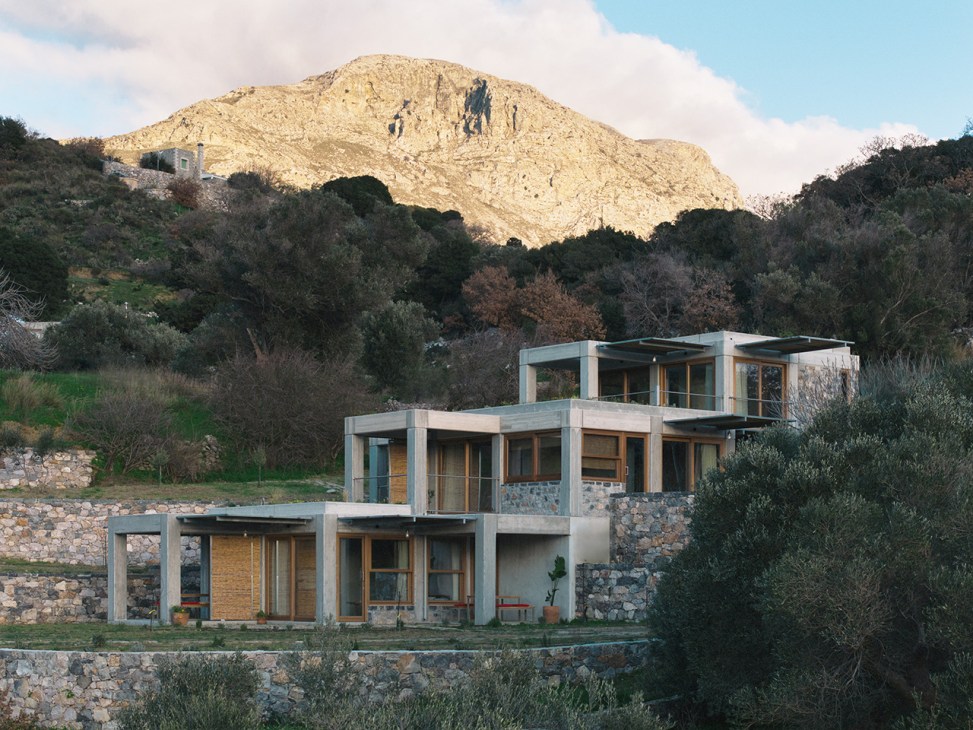
Larsen agreed to create two sections on the plot: a cluster of six holiday units, as well as a nearby family house for the couple and their twins to live in. This summer, the first guests will be welcomed to these meticulously conceived buildings, called Meraki Studios (which can be loosely translated as “passion” but also means “doing something with love and care”).
To create a suite of rectilinear, almost cave-like buildings, Larsen and his team looked to the local environment for inspiration. Arranged over three levels, the Meraki apartments respond to Crete’s topography and its distinctive vegetation. The same materials that were used in the area’s ancient dry-stone walling feature heavily here; Larsen hopes that the lichen growing across the Rethymno region will also thrive on these new rocky surfaces in years to come.
Given Crete’s harsh sun and salty winds, any wood exposed to the elements needs to be exceptionally hard-wearing. In the past, Larsen resisted using African hardwoods in his European projects but the architect reasoned that this site’s location – far closer to Cairo than to Copenhagen – justified tropical timber. He also integrated Meraki’s numerous wooden-framed windows, sliding doors, pergolas, terraces and other outdoor niches into the buildings, hoping to enhance visitors’ enjoyment of open-air living.
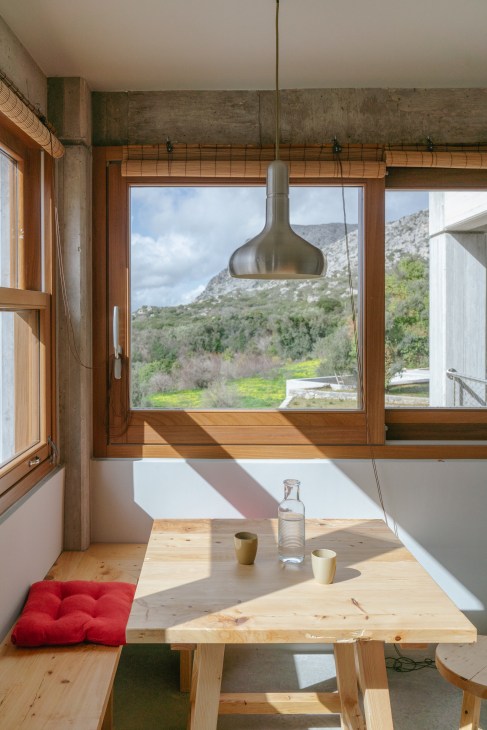
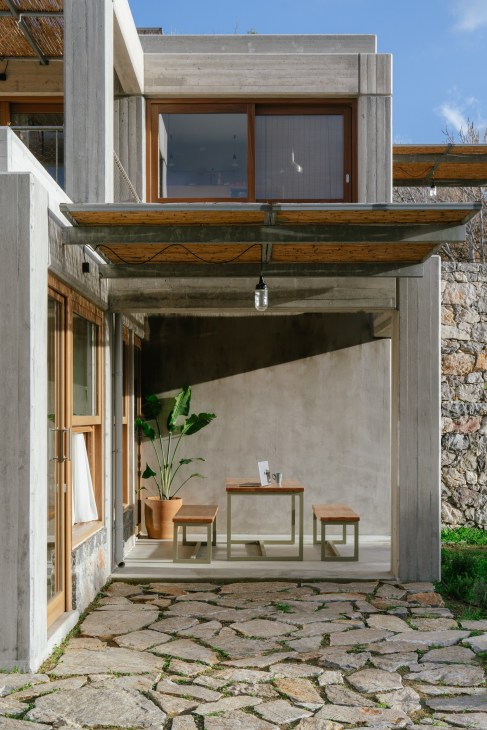
Thoughtful details help to distinguish each dwelling. “We tried to make all six apartments feel as though they’re the best one,” says Larsen with a smile. “When someone arrives, they will think, ‘Ah, I have a special feature in my one.’”
That distinctive character extends to what guests find inside. The architect paid careful attention to the placement of the beds so that visitors have access to stunning vistas at daybreak. “You wake up, you open the curtains and then you have this full, fantastic view.”
Danish traditions dictate that the designer of a building oversees the interior furnishings. So Larsen designed Meraki’s custom furniture, which was made on-site from Cretan cedar by a local carpenter. The architect, who specialises in this sort of architectural Gesamtkunstwerk, says that fitted furniture is an apt choice for these relatively compact dwellings because it allows designers of such properties to take advantage of every last centimetre of space.
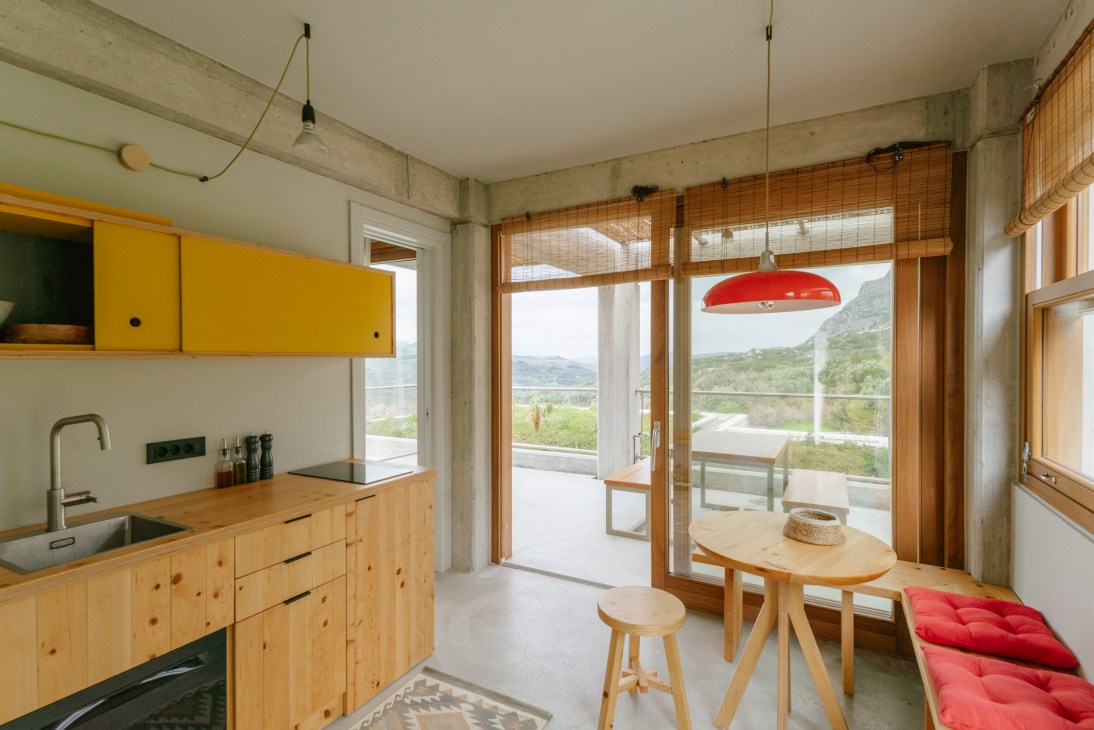
Some of the landscaping also fell under his purview. Meraki’s horticultural character has been softened a little to make it more garden-like, while still supplying the development with bountiful produce. At the plot’s far end, there is a medium-sized pool built among ancient stone walls. Larsen and his team have scattered deck chairs and sunloungers in carefully chosen spots. Some clusters offer privacy, others encourage guests to socialise and many afford views of the region’s spectacular sunsets.
Stroll around Meraki’s grounds and you’ll soon appreciate how well it functions as a hideaway. But it also suits anyone who is keen on views of nature and gastronomy. “Everyone says that Crete has the best food in Greece,” says the architect. “Every little tavern serves great dishes and here you can benefit from a fruit-and-vegetable garden.”
The place is unusual as it’s a Greek island holiday destination that’s within easy reach of – but not dedicated to – the sea. “It shows a new side of this landscape that I have come to appreciate,” says Larsen. The architect has considered all aspects of this terrain. Perhaps most significantly, he has made Meraki a porous place, where the distinction between interior and exterior melts away in the Mediterranean light.
“It’s not a hotel where you look out to the landscape,” he says. “It’s a place where inside and outside are melded together by lots of doors and openings, pergolas and terraces. That’s what people will remember about being here.”
merakistudios.gr


